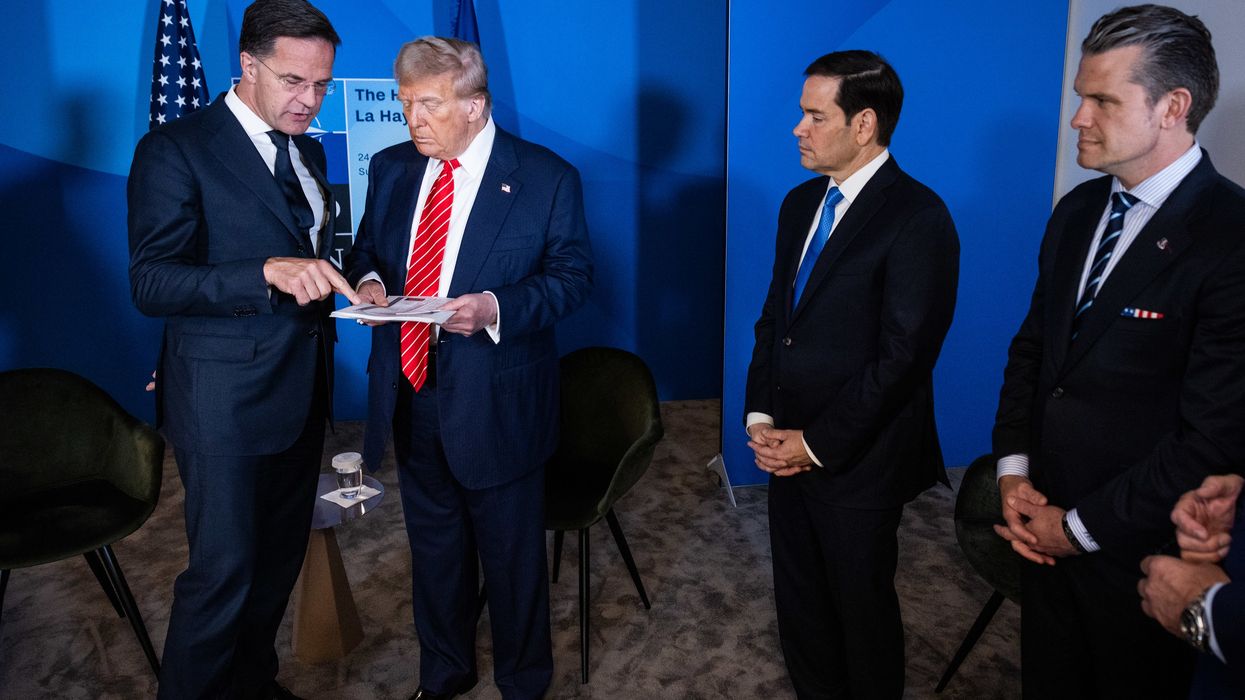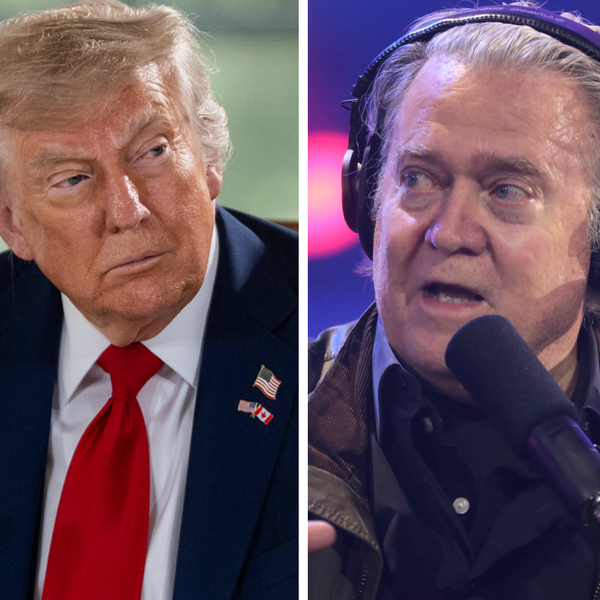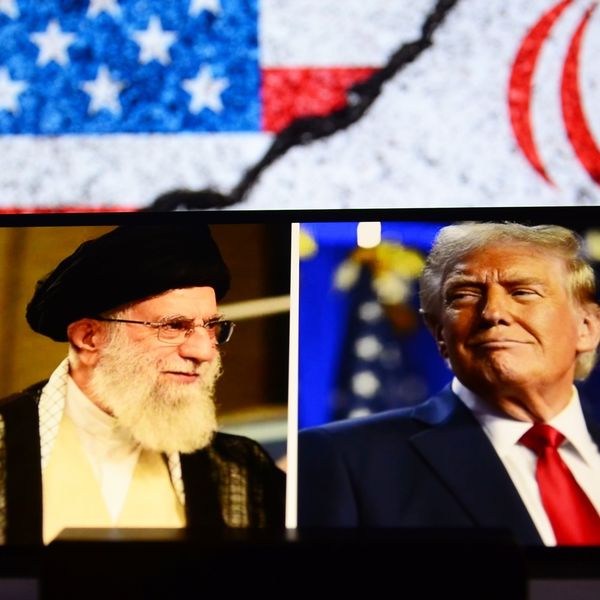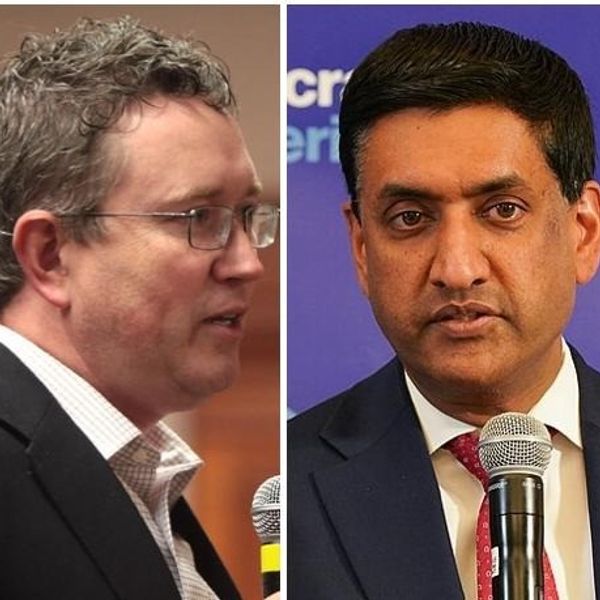Since the US killing of the Quds Force commander, Qassem Soleimani, in January, the Iranian regime has been gradually shifting to a custom-made strategy in the Levant with mixed political and military tactics in Lebanon, Syria, and Iraq. This approach is accruing liabilities as well as paying dividends in a critical year of Iran’s economic difficulties resulting from the repercussions of US sanctions and the coronavirus outbreak.
With no breakthrough anticipated in the nuclear talks, Washington and Tehran have de-escalated their tensions in recent months despite close encounters in the Gulf and Iraq. Last week the Trump Administration withdrew Patriot missile batteries from Saudi Arabia that were deployed after a series of attacks on Saudi oil facilities, for which the Iranian regime was blamed. This move came after Iranian gunboats harassed American warships last month for the first time since 2018, which prompted President Donald Trump to direct the US Navy to “shoot down and destroy” Iranian gunboats if they repeat their harassment. Tehran responded with a tweet by Iranian Foreign Minister Mohammad Jawad Zarif asserting that “US forces have no business 7,000 miles away from home, provoking our sailors off our OWN Persian Gulf shores.”
Zarif has recently been the most vocal Iranian official in responding to the Trump Administration, which shows that Tehran is primarily resorting to diplomatic means instead of the traditional language of military threats. Moreover, and beyond the rhetoric, there is enough evidence that both Washington and Tehran want at least to keep communication channels open. There are ongoing talks to explore the possibility of securing the release of an American Navy veteran held by Iranian authorities and an Iranian American doctor detained by US authorities.
Against this background, the Iranian regime is facing difficult questions regarding how to deal with tremendous challenges in Lebanon, Iraq, and Syria. While there are common themes and tactics, the Trump Administration is positively responding—except in Syria—to this emerging Iranian strategy that seems to be customized to fit the condition of each country.
Low Profile of Accommodation in Lebanon
In Lebanon, Hezbollah continues to set the tone in managing complex relationships with the Lebanese political class. Prime Minister Hassan Diab, who has held office since January, is facing a staggering economic reality. On April 30, he announced a five-year economic recovery plan that desperately requires financial assistance from the International Monetary Fund (IMF). Although Hezbollah Deputy Secretary General Naim Qassem said in February that “we will not accept submitting to (imperialist) tools … meaning we do not accept submitting to the International Monetary Fund to manage the crisis,” talks with the IMF officially began on May 13.
This compromise by Hezbollah is not only based on the Iranian regime’s approach but also on domestic considerations as allies like President Michel Aoun and Parliament Speaker Nabih Berri have pushed for the Lebanese cabinet to go in that direction. Moreover, when Aoun convened a meeting at the presidential palace in Baabda to rally the political class around the economic recovery plan, US allies like Lebanese Forces leader Samir Geagea attended as a subtle show of support and Druze leader Walid Joumblatt met separately with Aoun to mend fences. Former Prime Minister Saad Hariri boycotted the meeting after criticizing the government’s economic plan. Hariri has his own calculations as he comes under Saudi pressure and faces tensions with his brother, Bahaa, who is competing to replace him as political heir of the late Rafic Hariri. He might also be concerned that Aoun and Diab could purge some of his political appointees in the Lebanese administration; that does not seem to be the trajectory, however, nor would Hezbollah endorse alienating Hariri at this stage. In the near term at least, a serious opposition to the Diab government or Hezbollah is not on the horizon.
Moreover, Lebanon’s Central Bank Governor Riad Salameh, who works closely with Washington to implement US sanctions on Hezbollah, encountered political pressure to resign given the free fall of the Lebanese currency. After subtle support of Salameh by both the United States and French governments, the pressure to sack Salameh subsided. The United States continues to endorse the Diab government, which has facilitated US interests in Lebanon while balancing its relationship with the Iranian regime and Hezbollah.
On the diplomatic front, the Israeli government, with the backing of the Trump Administration, is currently demanding major changes in the mandate of the United Nations peacekeeping mission in south Lebanon, known as UNIFIL. This is not the first time the United States backs Israel in a bid to give peacekeepers access to private sites and freedom of movement, which is traditionally met by a veto from both Russia and China at the UN Security Council. This annual diplomatic clash at the United Nations, when renewing the UNIFIL mandate, does not impact the inclination of Israel and Hezbollah to avoid a conflict. The most recent manifestation of this dynamic occurred last month when Israeli forces reportedly warned Hezbollah operatives in Syria before bombing their convoys, to avoid killing them.
Compromise and Uncertainty in Iraq
The most crucial vacuum for the Iranian regime to fill after the Soleimani assassination is in Iraq, where Tehran has complex relationships with Iraqi militias. In his speech in January, Hezbollah Secretary General Hassan Nasrallah said that the retaliation to Soleimani’s killing might happen in “the coming days, weeks and months” and began to rally the Iranian regime’s allies around this objective. At that time, Hezbollah reportedly organized meetings with Iraqi militia leaders to maintain their unity in the Iranian orbit. Mohammad Kawtharani, a senior Hezbollah military commander in charge of the Iraq portfolio, seems to be filling Soleimani’s shoes in Iraq. Anecdotal accounts from media sources indicate no clear confirmation of Kawtharani’s whereabouts and meetings, but it is increasingly clear that Hezbollah’s man in Iraq is playing a role and the United States is taking note. In April, the Trump Administration offered $10 million for information on Kawtharani.
While Iranian Supreme Leader Ali Khamenei has affirmed that the Quds Force “will be unchanged from the time of his predecessor,” the new commander of the core unit in the Islamic Revolutionary Guard Corps, Esmail Ghaani, does not have the same clout of Soleimani, who masterfully maneuvered Iraqi politics. During his visit to Baghdad earlier this year, Ghaani reportedly did not secure a meeting with Ayatollah Ali al-Sistani; further, Shia cleric Muqtada al-Sadr also canceled a prescheduled meeting with him. A parliamentarian of the bloc led by Shia cleric Ammar Hakim issued a rebuke, saying that the “timing of Ghaani’s visit to Baghdad was improper and a clear interference attempt in the formation of the new government.”
While the impact of Ghaani’s visit was limited on the political level, it has paid off militarily as US troops in Iraq continue to come under pressure with daily rocket strikes against US facilities. This prompted a US official to say that US withdrawal from Iraq “may ultimately come down to how much risk the president is willing to accept in Iraq before our presence there becomes too much of a burden.” Kataeb Hezbollah, which was led by Abu Mahdi al-Muhandis (who was killed with Soleimani), is looking to avenge the death of their former commander. However, the Iranian regime is resorting to new tactics in Iraq by forming unknown groups such as the “League of Revolutionaries” to threaten US forces.
On the political front, after five months of a government vacuum in Iraq, the impact of the coronavirus accelerated the formation of a new cabinet led by Mustafa al-Kadhimi, who previously served as the head of the National Intelligence Service and is a relatively independent and non-provocative character. The new cabinet that was approved by the Iraqi parliament on May 6 seems to be an attempt to replicate the era of former Prime Minister Haider al-Abadi, with the expectation that Kadhimi’s intelligence background might help him better maneuver Iraqi politics.
Kadhimi is facing uphill challenges. Protesters went back to the streets demanding reforms and better living conditions amid difficult economic circumstances and plunging oil prices, the main source of Iraqi revenues. While most of Kadhimi’s cabinet was approved by the parliament, the key posts that remain vacant include the oil and foreign affairs ministries; this is because of the failure to agree on candidates, given their importance for both Washington and Tehran. Moreover, in April the Trump Administration renewed Iraq’s waiver to import Iranian electricity, which expires on May 26. The United States keeps extending these waivers to use as political leverage on Iraq, each time nudging it to transition to becoming less dependent on Iranian energy sources..
The new Iraqi premier noted that his country “will not be a proxy arena for settling affairs or a launch pad for attacking any neighboring or friendly country.” This balancing act was manifested in order to review the strategic agreement that outlines the rules of engagement for US forces in Iraq, in a move to remedy the implications of the US killing of Soleimani on Iraqi soil. On the other hand, he reinstated the commander of Iraq’s elite anti-terrorism services, General Abdul-Wahab al-Saadi, who is close to the Pentagon and was a challenge for Iraqi militias close to Iran before he was sacked last year. The Trump Administration’s goal to have Kadhimi’s government rein in continuing attacks on US assets in Iraq might not be feasible. Both the Iranian backed political coalition al-Fateh and the Popular Mobilization Forces (PMF) are divided on whether to pressure US forces in Iraq based on Iranian strategy post Suleimani, which weakens Tehran’s leverage to pressure the United States in Iraq. It remains to be seen if Kadhimi can appease the Iranian-backed Shia coalition that approved his ascendency to power; so far, decisions by the new cabinet reflect the inclination of both Tehran and Washington to compromise.
Under Russian and Israeli Pressure in Syria
In Syria, the dire economic crisis and the coronavirus outbreak are reinforcing Tehran’s competition with Moscow as well as Israel’s free hand in deterring Iran. A string of new articles in the Russian media that are critical of Syrian President Bashar al-Assad have led to wide speculation in the US media and beyond that Russia is “turning against Iran and Assad.” While such statements exaggerate the current dynamics, it is clear that US sanctions and the lack of revenues are prompting Moscow and Tehran to intensify their competition to pressure the Assad regime. However, this does not necessarily mean a breakdown in their alliance in Syria nor an end to their support of Assad. To be sure, Assad’s feud—over taxes owed to the government—with his maternal cousin, Rami Makhlouf, who has long controlled the regime’s state wealth and economy, illustrates the pressure the Syrian regime is experiencing. Moreover, Bashar’s brother Maher, who commands the Republican Guard and the army’s Fourth Armored Division, has also imposed customs fees on smuggling across the Syrian-Iraqi border crossing via al-Boukamal area, which led to tensions between Syrian regime forces and the Iran-backed Iraqi Popular Mobilization Forces. Meanwhile, Tehran continues to provide support to the Assad regime, which contracted Iranian companies last week to explore oil in al-Boukamal area in the eastern countryside of Deir Ezzor. This development came after a visit to Damascus in April by Iranian Foreign Minister Zarif.
Moreover, Israeli strikes on the Iranian regime and its allies in Syria have increased in intensity in the past weeks. The most recent targets included a weapons warehouse near the Scientific Studies and Research Center in Aleppo province as well as Hezbollah’s arms caches outside Homs in central Syria and near the Israeli-occupied Golan heights in the south. Former Israeli Defense Minister Naftali Bennett said in a statement on April 28 that “we have moved from blocking Iran’s entrenchment in Syria to forcing it out of there, and we will not stop.” US Secretary of State Mike Pompeo echoed this statement on May 7, noting that Iranian forces “need to leave not only the southwest corner” of Syria but to exit the country “more broadly.” Israeli security officials believe that the Iranian regime is reconsidering its role in Syria by giving up its military investments. While there might be some budget considerations in Tehran, there does not seem to be a significant shift in the general Iranian approach in Syria.
Prospects for the Iranian Role in the Levant
A combination of factors is putting Iran on the defensive: the economic crises in the Levant, US sanctions, impact of the coronavirus, and the decline in global oil prices. Looking to expand revenues, the Iranian regime cannot handle or fund the economic fallout in the Levant nor continue the same level of funding for allies. This approach was evident in the formation of the most recent Lebanese and Iraqi governments. Under Russian and Israeli pressure, Iran continues its incremental expansion of leverage in Syria, despite setbacks in recent weeks. Iran’s Supreme Leader Ayatollah Ali Khamenei said on May 17 that “the Americans won’t stay in Iraq and Syria and will be expelled”; however, beyond the rhetoric, Tehran is not actively working toward this objective and might be playing the long game instead.
While Iran is conceding and cutting its losses in the Levant, it would be a mistake for the Trump Administration and its allies to consider such actions as a sign of weakness. It is indeed a vulnerable moment for Tehran, but the Iranian regime remains in the driver’s seat. Indeed, these concessions are within the parameters of the continuing edge it enjoys in the region, at least in Iraq and Lebanon.
This article has been republished with permission from the Arab Center Washington DC.














